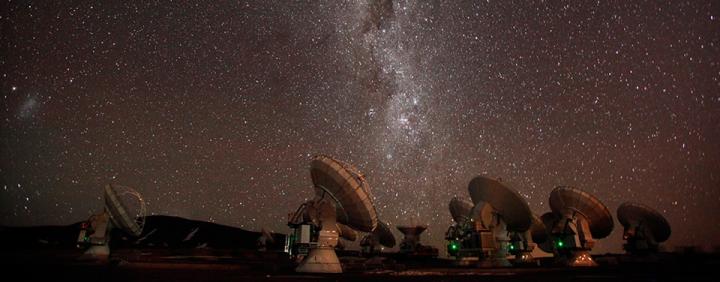Maybe Dying Stars Fart So Much Because They're in a Relationship

When large stars approach the end of their golden years and transform from massive red giants into teensy white dwarfs, they must first fart away up to 80 percent of their mass.
For tens of thousands of years, a tsunami of gas and dust streams away from each collapsing giant, sending a steady stellar wind into outer space until the star's core finally burns up the last of its fuel and only the crystalline husk of a white dwarf remains. This shrinkage-via-farting is considered a standard phase of life for stars between one-half and eight times the mass of Earth's sun. However, one set of 12 troublesome giants seems to be passing their last gas inexplicably quickly.
Each of these windy dying stars has been observed ejecting roughly the equivalent of 100 Earth-size planets' worth of mass every year — a grueling pace that should cause the giants to burn through their masses in just a few hundred to 1,000 years, far more quickly than a typical red giant should. According to a new study published today (Feb. 25) in the journal Nature Astronomy, it may all be an illusion. [Rainbow Album: The Many Colors of the Sun]
Fresh observations show that at least two of these gassy giants aren't ejecting matter at an abnormal pace — it only appears that way because their stellar winds are being tugged into a large concentration by some unseen gravitational powerhouse.
"We believed that these red giants were record holders for mass-loss rate, but that's not the case," Leen Decin, lead author of the new study and a professor at KU Leuven Institute of Astronomy in Belgium, said in a statement.
The likelier explanation, Decin said, is that each of these seemingly abnormal red giants is "not alone," but one half of a binary star system.
A gravitational illusion
For their new research, Decin and his colleagues observed two of the 12 notorious gas-passers through the Atacama Large Millimeter/submillimeter Array (ALMA) telescope in Chile. Taking a closer look at the stellar wind swirling around these stars, the team found jets of dust and gas swirling away from the stars in a distinct spiral shape, not in the typical shell shape associated with dying red giants.
Get the Space.com Newsletter
Breaking space news, the latest updates on rocket launches, skywatching events and more!
According to Decin, this wobbly pattern was a hint that some massive nearby object was tugging on the wind — and likely even on the red giants themselves — with considerable force.
"It's an indirect indication that the red giant is not alone, but part of a binary star system," Decin said. "The red giant is the main star with a second star circling it."

According to Decin, the presence of a subordinate star could affect the red giants in two big ways. For one, the solar wind generated by the red giant would be continuously pulled toward the second star, creating a pileup of matter at the gravitational sweet spot between the two bodies. Meanwhile, that secondary star's gravity would also cause the red giant to wobble slightly in its own orbit. These two movements combined could explain the spiral ribbons of gas that scientists saw swirling out of the main red giants.
This gravitational illusion may have allowed prior researchers to overestimate the rate that the red giants were shedding their mass. What looked like a period of extreme mass loss by a single star was actually just a glimpse of a highly-concentrated region of gas and dust created by the interactions between two binary stars. Decin and his colleagues ran some simulations testing what this binary interaction could look like, and found that previous mass loss estimates may be off by a factor of 10; instead of ejecting 100 Earths' worth of mass every year, the main stars in these binary duos were more likely just losing 10 Earths' worth, Decin said — more or less the typical amount expected for stars of their size.
Further study is needed to confirm whether all 12 of the supposed record-setting red giants are in fact members of their own binary partnerships. If they are, then they may have just gained a slightly longer life span in scientists' eyes; stars burning off their mass more slowly can last longer before fizzling out.
"We believed that many stars lived alone, but we will probably have to adjust this idea," Decin said. "A star with a partner is likely to be more common than we thought."
- Spaced Out! 101 Astronomy Images That Will Blow Your Mind
- 6 Stellar Places for Stargazing
- 11 Fascinating Facts About Our Milky Way Galaxy
Originally published on Live Science.
Join our Space Forums to keep talking space on the latest missions, night sky and more! And if you have a news tip, correction or comment, let us know at: community@space.com.

Brandon has been a senior writer at Live Science since 2017, and was formerly a staff writer and editor at Reader's Digest magazine. His writing has appeared in The Washington Post, CBS.com, the Richard Dawkins Foundation website and other outlets. He holds a bachelor's degree in creative writing from the University of Arizona, with minors in journalism and media arts. He enjoys writing most about space, geoscience and the mysteries of the universe.










